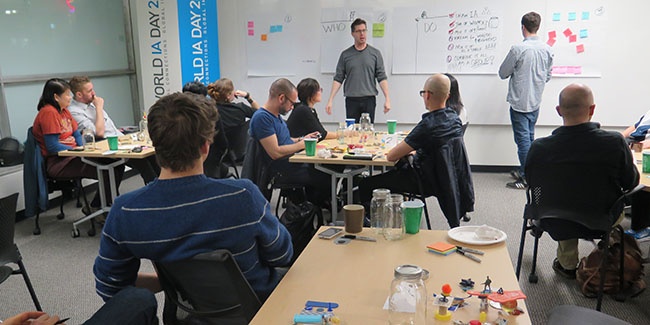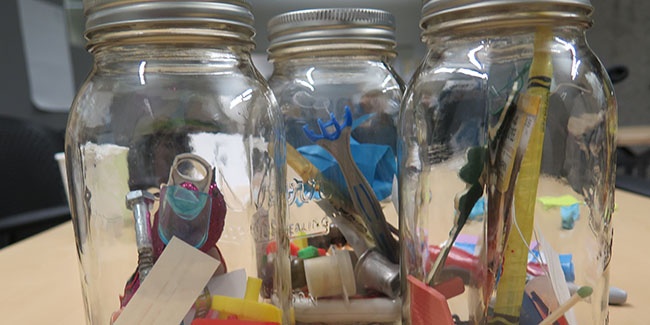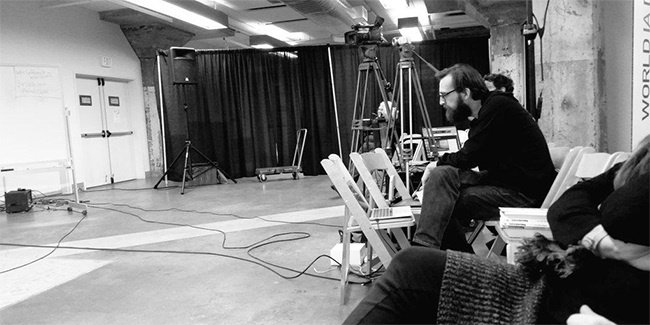In today’s world we have access to an ever-growing amount of information, but it isn’t always as easy to find the exact information you are looking for. Solving for the structural design of shared information environments (think library systems, databases, websites, intranets, and the likes), is an emerging practice focused on improving the usability and findability of complex information systems: Information Architecture (IA). The purpose of IA is to help users understand where they are in the system, what they’ve found, what’s around, and what to expect.
Every year the biggest network of active IA specialists, the Information Architecture Institute, organizes the World Information Architecture Day (WIAD): a free conference held on the same day in 38 cities in 24 countries around the world. This year XPLANE had the privilege to support the event and speak at the Portland edition.
We kicked off the weekend with a special-edition Visual Thinking School (VTS) workshop the night before the conference. With an enthusiastic group of WIAD participants, we started answering this Portland’s 2015 conference theme (‘What the F*ck is Information Architecture?’) by formulating individual definitions of IA. Next, each participant was handed a Jar of Whimsy – a jar full of random items – and was asked to organize the contents. They modified their definitions through a series of exercises to reveal a handful of principles on IA. Among these were the purpose of organizing information and the advantage of a human centered approach. In the end all the participants, as a group, impressively organized over 800 combined items in a cohesive structure in less than 15 minutes!

Matt Moraskey and Jacob O’Brien leading the VTS session.

Jars of Whimsy.
Picking up the thread the next day at the conference, we continued to gather principles and visualizations of IA from the 200 conference attendees. By the time it was our turn to present, we had shortlisted the collected principles and synthesized the visualizations in three final concepts. During the interactive talk, the crowd got a taste of the process through some of XPLANE’s guiding principles and work, voted for the final visual and IA principles (contextual, relational, purposeful, storytelling), and participated in a crowd-sourced ideation experiment in which the room full of people ended up becoming a gigantic parallel processor to select the best ideas. At the end, the winning ideas were handed off to the next speaker: Charles Adler, co-founder of Kickstarter.

Cynthia Owens speaking at WIAD. Photo taken by Danielle Olson.

Roel Uleners visually capturing Cynthia Owens’s presentation. Photo taken by Danielle Olson.
So did we answer the conference’s fundamental question – what the f*ck information architecture? Based on the final output, we got a solid head start. But as in any emerging field, especially one that stretches into as many practice areas as IA does, it is almost impossible to come to a complete definition that satisfies all of those involved. As the field rapidly grows, I think it might take us a few more World Information Architecture Days to get there. We’re looking forward to the next edition and hope you will be able to participate in a city near you!
PS: all of this year’s talks were filmed and streamed live. We’ll post an update as soon as they are available for viewing online.
